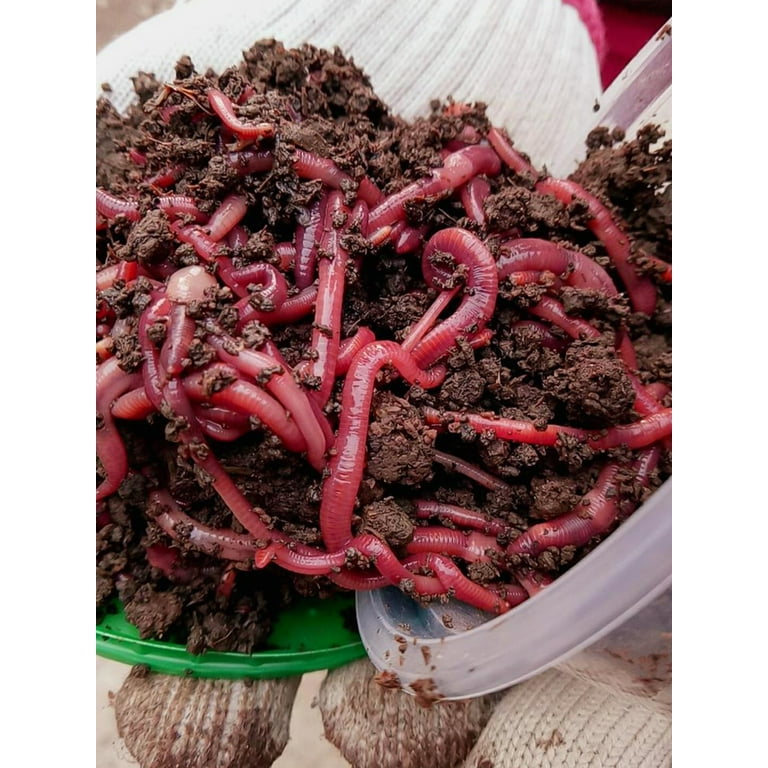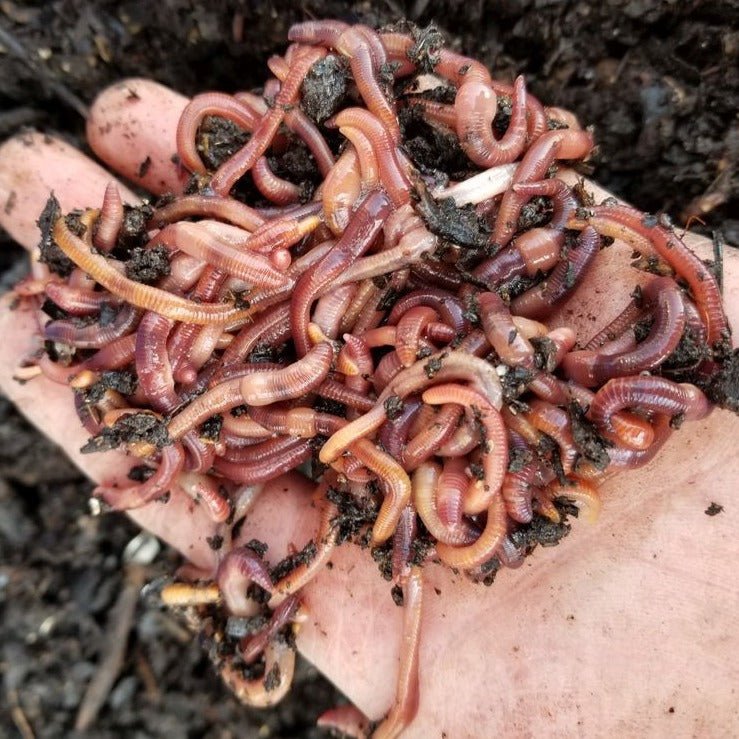Comprehending the Perks of Red Wiggler Composting: Just How This Effective Technique Transforms Organic Waste Into Nutrient-Rich Soil Changes
Red Wiggler composting, using the varieties Eisenia fetida, offers an engaging method to natural waste monitoring, converting kitchen scraps and yard particles right into beneficial dirt modifications. This approach not just improves soil fertility however also addresses pressing ecological worries, consisting of land fill waste reduction and greenhouse gas emissions. As we explore the details of this procedure, the complex advantages it supplies might disclose unforeseen understandings right into sustainable techniques and eco-friendly equilibrium. Recognizing these dimensions might motivate a reevaluation of just how we regard waste and its prospective payments to a healthier planet.
What Are Red Wigglers?
Red wigglers, medically called Eisenia fetida, are a varieties of earthworm that play a critical duty in vermicomposting systems. These worms are characterized by their reddish-brown color, segmented bodies, and a distinct ability to grow in organic-rich environments, making them suitable for composting applications - Red Wiggler Composting. Unlike their garden-dwelling counterparts, red wigglers favor to occupy the top layers of soil, where decomposing issue is plentiful
Usually gauging between 3 to 4 inches in length, red wigglers have a high reproductive price, enabling them to multiply rapidly under ideal conditions. They possess a special digestive system that permits them to refine natural waste efficiently, transforming it right into nutrient-rich castings, which are highly valuable for plant growth.
Their resistance to varying wetness degrees and temperature ranges better enhances their utility in vermicomposting setups, making them a favored selection amongst composting lovers. In addition, red wigglers are aerobic microorganisms, which demands a well-aerated composting environment, making sure reliable decomposition. Comprehending the organic characteristics and habits of red wigglers is essential for optimizing their usage in lasting waste management practices.

Advantages of Vermicomposting
Utilizing the power of vermicomposting offers a plethora of farming and ecological benefits. First of all, it substantially lowers natural waste in land fills, therefore lessening methane discharges, a powerful greenhouse gas. By diverting food scraps and lawn waste to vermicomposting, we support a more lasting waste administration system.
Furthermore, vermicomposting improves soil health and wellness. The castings created by red wigglers are abundant in necessary nutrients, germs, and enzymes, boosting soil structure and fertility. This nutrient-rich amendment promotes durable plant development and enhances water retention, minimizing the requirement for chemical fertilizers.
In addition, vermicomposting fosters biodiversity in the dirt environment. The introduction of useful bacteria from worm spreadings aids in condition suppression and nutrient biking, creating a much healthier atmosphere for plants.
Financially, vermicomposting minimizes the expenses related to chemical inputs and garbage disposal. Farmers and gardeners can cultivate high-quality produce at lower expenses, adding to food safety and security and sustainability.
How to Beginning Composting
Beginning a composting venture can be a fulfilling and simple process. This will aid maintain a well balanced temperature, critical for the composting process.
Collect organic products such as kitchen area scraps, yard waste, and shredded paper. Goal for a well balanced mix of 'environment-friendly' materials, high in nitrogen (e.g., fruit scraps, coffee grounds), and 'brownish' products, rich in carbon (e.g., dried out leaves, cardboard) A ratio of about 2:1 eco-friendly to brownish products is ideal.
Begin layering your materials, making sure adequate air flow by transforming the pile on a regular basis. This promotes cardiovascular disintegration, minimizing smells and speeding up the process. Display moisture degrees; the compost ought to feel like a moist sponge yet not extremely damp.
Nutrient Profile of Vermicompost
Composting, specifically with red wigglers, yields a nutrient-rich product called vermicompost. This organic change is differentiated by its high concentration of necessary nutrients, making it a very useful source for horticulture and farming. Vermicompost typically includes elevated levels of macronutrients such as potassium, phosphorus, and nitrogen, which are critical for plant development. In addition, it gives trace elements like magnesium, calcium, and iron, promoting durable plant advancement and boosting soil health.
The microbial task present in vermicompost additionally improves its profile, introducing advantageous bacteria and fungi that advertise nutrient accessibility and uptake in plants. This biological component aids in reducing plant conditions and boosting dirt structure, bring about enhanced water retention and oygenation.

Ecological Effect of Composting
The ecological impact of composting, particularly via the usage of red wigglers, is profound and multifaceted. This method dramatically lowers the volume of natural waste sent out to garbage dumps, which consequently minimizes greenhouse gas emissions, particularly methane-- a potent factor to climate adjustment. By diverting natural products from land fills, red wiggler composting not just aids mitigate ecological degradation yet additionally advertises lasting waste management techniques.

Moreover, composting click site adds to carbon sequestration, as the procedure captures co2 from the environment and shops it in the soil. This natural procedure aids in combating environment modification while enhancing the dirt - Red Wiggler Composting. On the whole, red wiggler composting provides a feasible, green solution for waste management and environmental sustainability, advertising healthier ecological communities and an extra lasting future
Final Thought
In conclusion, Red Wiggler composting functions as an efficient approach for transforming organic waste right into beneficial soil modifications. The procedure not dig this just improves soil fertility and structure but likewise alleviates ecological concerns related to garbage disposal. By using Eisenia fetida, this form of vermicomposting adds to boosted biodiversity and supports sustainable agricultural methods. Inevitably, Red Wiggler composting plays a critical function in advertising healthier environments and attending to the challenges of climate adjustment.
Red Wiggler composting, employing the varieties Eisenia fetida, presents a compelling approach to organic waste administration, transforming kitchen scraps and backyard debris right into important soil next changes. Unlike their garden-dwelling equivalents, red wigglers prefer to inhabit the upper layers of soil, where decomposing issue is bountiful.
The spreadings produced by red wigglers are abundant in essential nutrients, microbes, and enzymes, boosting soil structure and fertility. The nutrient-rich byproducts of red wiggler task improve soil structure, increase water retention, and promote biodiversity within the soil community.In verdict, Red Wiggler composting serves as a reliable method for transforming natural waste into beneficial soil amendments.